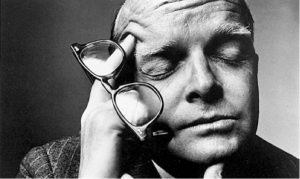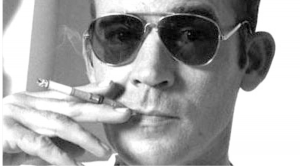I was disappointed when the U.S. Postal Service recently unveiled its new Flannery O’Connor stamp, which slightly resembles one extant photo of Ms. O’Connor as a co-ed but would not be recognizable to many people who are familiar with the most prevalent, and representative, photographs of her as an adult artist. Lawrence Downes in The New York Times has likened the stamp image to Betty Crocker, and Joyce Carol Oates Tweeted that the artist who painted the portrait which was digitalized for the stamp not only could never have seen a photo of Ms. O’Connor, but must, also, have never read a word the Georgia author wrote. I’m not sure I’m convinced of that, but this is certainly a missed opportunity to “put a face on” many of the most piercing and sadly humorous American short stories, certainly a dozen of my favorite pieces, genre aside, in world literature. Below are the stamp itself, the closest FOC image to the stamp and a photo from the series by Joe McTyre, one of many in which he saw her spirit:
The picture which artist Sam Weber may have been working from was taken while O’Connor was a student at Georgia State College for Women, though the pearls may have been imported from one of the 1962 photographs taken at Andalusia by Atlanta Journal-Constitution photographer Joe McTyre. My favorite shot (McTyre’s favorite showed her sitting under a self-portrait with a partridge) displays her on that day (during the warm half of the year, if I read the vegetation correctly) seated in the parlor, smiling, somewhat scholarly in those signature cat-eye glasses, not looking frail at all, her crutches out of sight and an open book on her lap. I’m a little conflicted on the matter of the crutches, as they’re not necessary for a photo of a seated person, nor should this occasion be an opportunity to make a point about physical disabilities. Or should it? I’m of two minds. O’Connor was stricken by disease, smitten by the love of her God and beloved of the muse and whatever other dieties confer a capacity for sweat and vision. However tempting it is to focus on her process, her domestic circumstances, her struggle and personal steel, the real point is the work, which I think would be more effectively celebrated by an image of the writer during the time she was crafting it. Crafting it almost every morning, I might add, from just after mass till lunch at the Sanford House Tea Room (often shrimp and peppermint pie).
Once lupus struck the young Flannery’s immune system, it damaged her body, her features, her stamina. The marvel is that it did not decrease her sense of mischief, theological seriousness, cultural understanding, caustic wit, originality of metaphor, allegorical logic, fierce discipline, compassion and instinct for the right words to “draw in large and startling figures for the blind.”
What I see in the portrait on the stamp is a more ordinary face, an unworldly young woman of the early fifties, somewhat blithe, the remarkableness of the heart and imagination not yet much in evidence in the eyes as she sits for a school picture (though the stamp artist has added some years, I think). I don’t really see the early signs of her vulnerability or her strength, which together with action and humor constitute character. Her Communion Day photo of 1932 reveals more grit and mischief in those windows to the soul than the co-ed shot.
But this is a tempest in a teapot, and I don’t think the trickster, cartoonist and satirist Mary Flannery O’Connor would have been very interested in either the postal image or my disappointment. We have the stamp (sadly, not the first class one I’d hoped for), which is a long-overdue tribute, and many who see it will say either “Who?” or “So that’s what she looked like.” Others will be reminded of Wise Blood, The Violent Bear It Away, “Revelation,” “Greenleaf,” “Good Country People,” while a few smile and suspect that “a good likeness is not hard to find.” Maybe someone will be moved to go out to the fields and read “A Circle in the Fire” aloud, “as if the prophets were dancing in the fiery furnace, in the circle the angel had cleared for them.” That would suit me.
[R. T. Smith has been editor of Shenandoah for20 years, over70 issues, including the 60th anniversary Flannery O’Connor issue. He is the author of several books, including The Red Wolf: A Dream of Flannery O’Connor. Smith’s article “Much Mischief Is Divinest Sense: My Flannery Visitation” will appear in the fall issue of The Flannery O’Connor Review.]

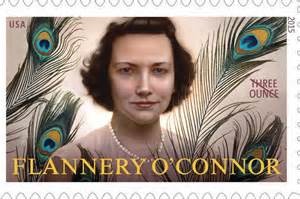
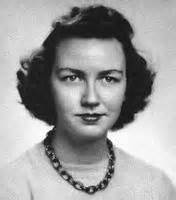
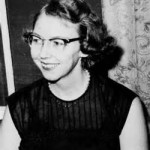
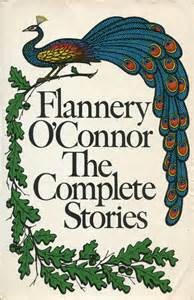

 very writer has his or her own routine. When I sit down to write anything, from a short reporting story to a 20-page research paper, I always sit in the same spot at the head of my dining room table with my pajamas and slippers on. I always have some sort of snack, usually something chocolatey. But, that’s not where my writing routine stops. I also can’t write without a jumbo glass of water with crushed ice. My dog is almost always at my side. So, in pursuit of an intriguing post, I asked myself, what do the most famous of authors do to prepare themselves to write?
very writer has his or her own routine. When I sit down to write anything, from a short reporting story to a 20-page research paper, I always sit in the same spot at the head of my dining room table with my pajamas and slippers on. I always have some sort of snack, usually something chocolatey. But, that’s not where my writing routine stops. I also can’t write without a jumbo glass of water with crushed ice. My dog is almost always at my side. So, in pursuit of an intriguing post, I asked myself, what do the most famous of authors do to prepare themselves to write?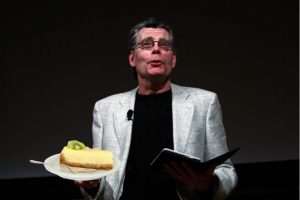 author, depends on cheesecake and beer to get his ideas flowing. King says that his sweet tooth has been passed down to his son, who eats crème brûlée for writing inspiration. King never goes to bars to drink because he says,“[bars are] full of assholes like me.” He drinks so much to write, that he claims to not remember writing his novel Cujo. One of King’s biggest fears is that sobriety will lead to the loss of his creativity.
author, depends on cheesecake and beer to get his ideas flowing. King says that his sweet tooth has been passed down to his son, who eats crème brûlée for writing inspiration. King never goes to bars to drink because he says,“[bars are] full of assholes like me.” He drinks so much to write, that he claims to not remember writing his novel Cujo. One of King’s biggest fears is that sobriety will lead to the loss of his creativity.